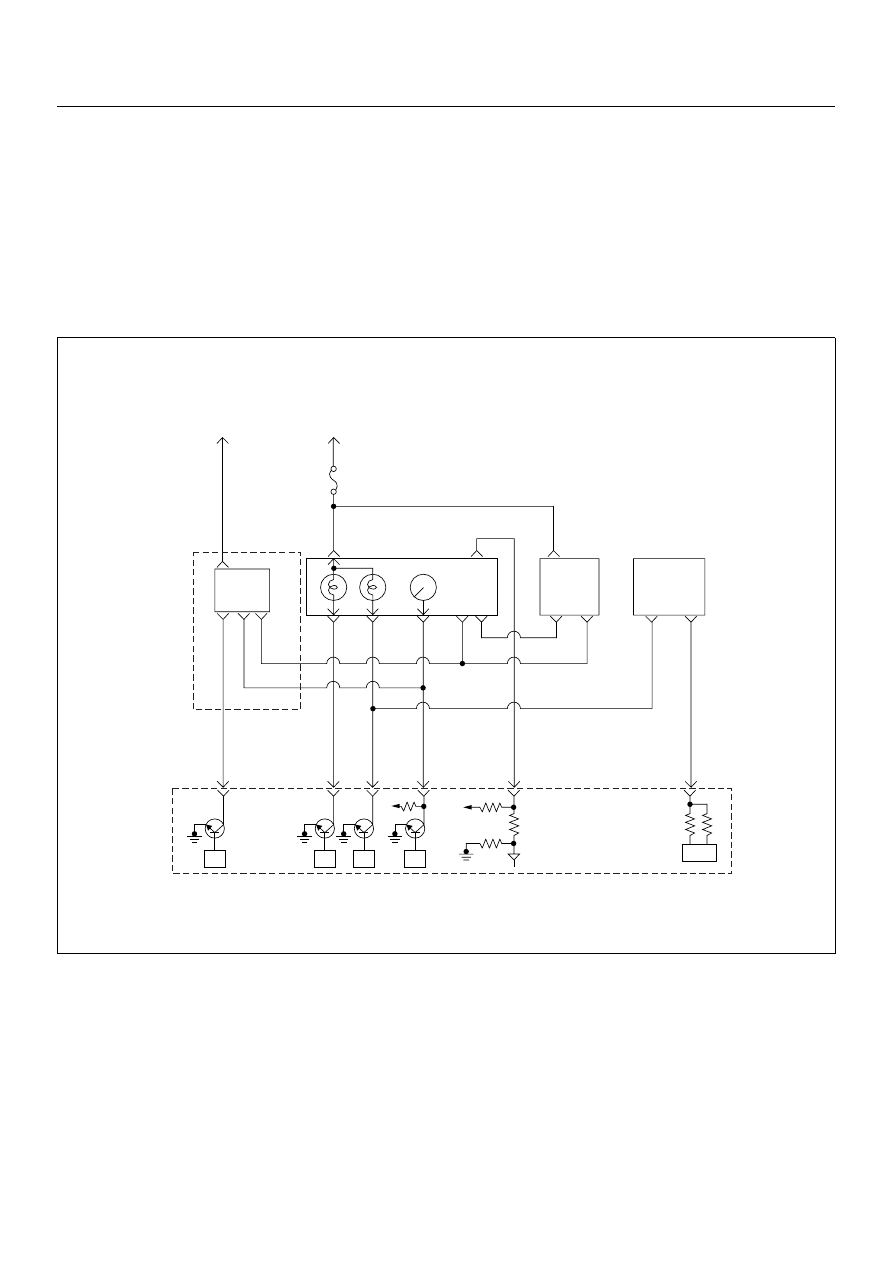Isuzu D-Max / Isuzu Rodeo (TFR/TFS). Manual - part 144

6E–180
4JH1 ENGINE DRIVEABILITY AND EMISSIONS
DIAGNOSTIC TROUBLE CODE (DTC) P0500 (SYMPTOM CODE 1)
(FLASH CODE 24) VEHICLE SPEED SENSOR CIRCUIT HIGH INPUT
DIAGNOSTIC TROUBLE CODE (DTC) P0500 (SYMPTOM CODE A)
(FLASH CODE 24) VEHICLE SPEED SENSOR INPUT SIGNAL FREQUENCY
TOO HIGH
DIAGNOSTIC TROUBLE CODE (DTC) P0500 (SYMPTOM CODE B)
(FLASH CODE 24) VEHICLE SPEED SENSOR INCORRECT SIGNAL
Battery
Voltage
Ignition
SW
Meter
15A
A16
A7 A10
0.5
BLK/
YEL
Batt
Batt
0.5
RED/
WHT
29
0.5
ORG/
BLU
43
0.5
BRN/
YEL
42
0.5
BLK/
RED
27
0.5
BLU/
WHT
68
0.5
WHT
35
VSS
0.85
YEL
Imnobiliser
Control Unit
7
8
0.5
BRN/
YEL
IC
4P out
0.85
YEL
Glow
Check
Engine
Tacho
Meter
A/T
A1
TCM
µP
µP
µP
µP
Engine
Control
Module
(ECM)